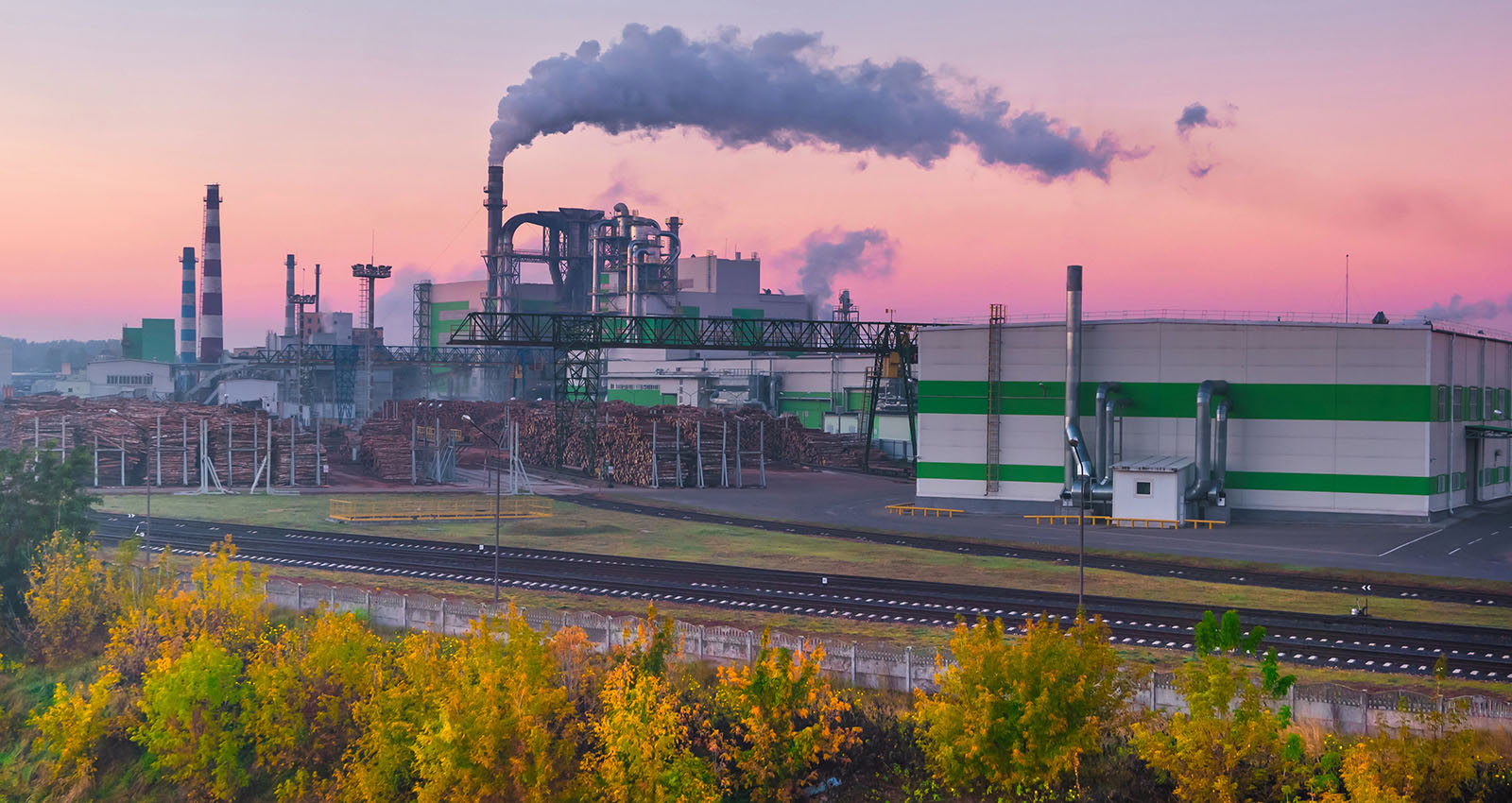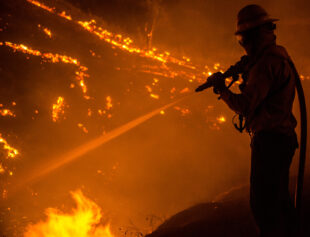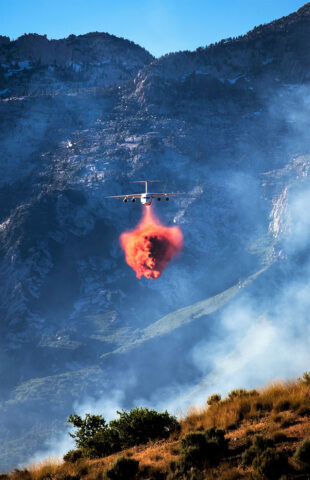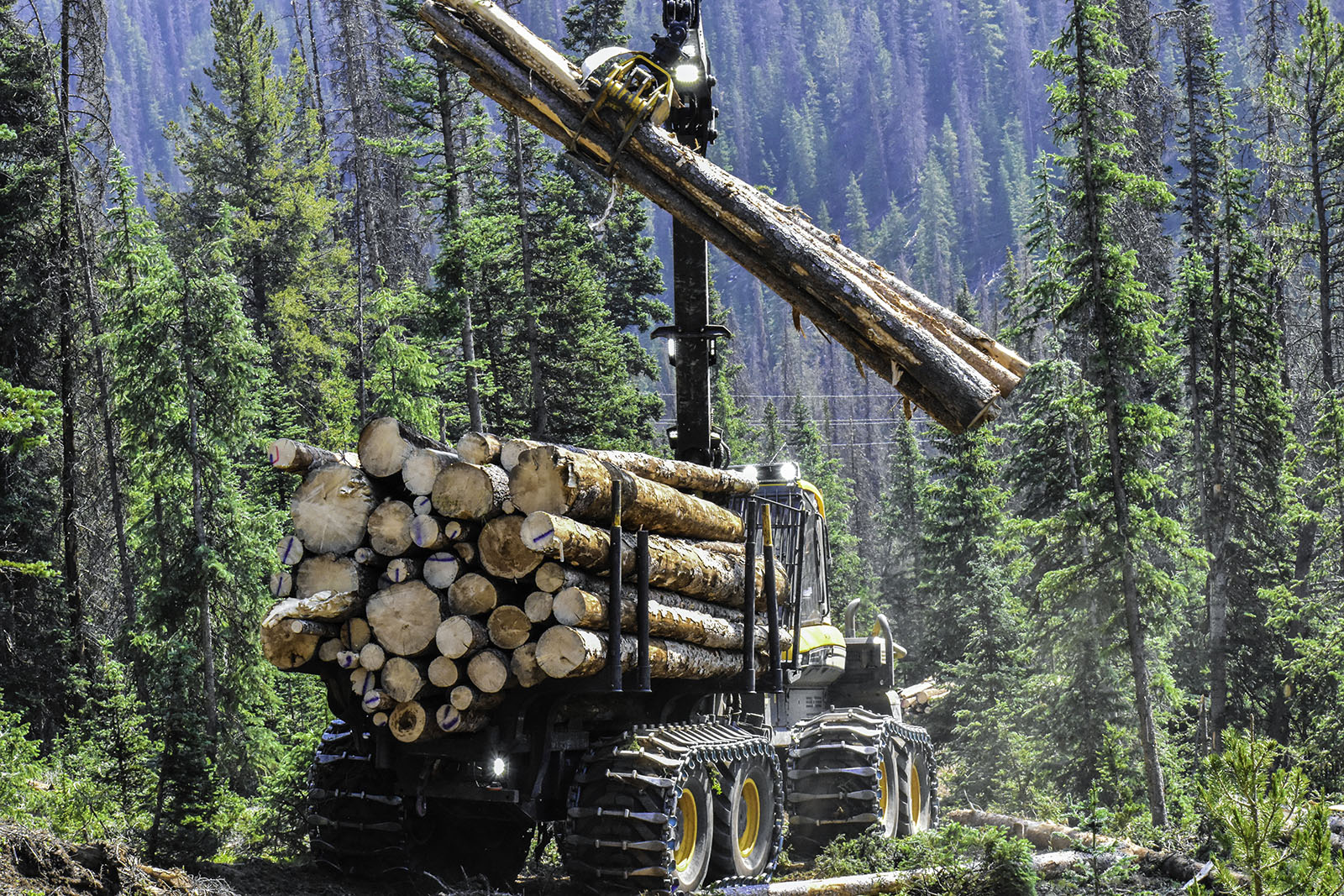Hailed as “Great news!” by Forest Service Chief Randy Moore, the Infrastructure Investment and Jobs Act (IIJA) allocates about $5.5 billion in additional funding for the Forest Service. In a prepared statement, Moore said the new funding will support an increase in capacity “to improve wildland fire management … across the National Forest System.
About $3 billion will be invested over five years to reduce the risk of wildland fire and restore ecosystems.” Moore said the investment supports a new 10-year Forest Service strategy for reducing wildfire risk “by treating the right landscapes at the scale needed to sustain and restore healthy, resilient fire-adapted forests. We know what to do; we have the science and partnership frameworks already in place. This legislation will give us the means to start doing it.”
Christopher Dunn is more skeptical. Dunn co-authored a peer-reviewed study recently published in Nature Scientific Reports. Dunn and his fellow researchers found that the most damaging wildfires in the West —to both forests and communities — more commonly start on private lands and are most often caused by humans. Dunn told Wildfire Today, “In the old framing, public agencies bear the primary responsibility for … protecting our communities, with their efforts focused on prevention, fuel reduction and suppression. This has been the dominant management approach of years past, which is failing us.”
Dunn believes a paradigm shift is long overdue. The Forest Service strategy “leads with a focus on thinning public lands to prevent wildfire intrusion into communities, which is not fully supported by our work, or the work of many other scientists, as the best way to mitigate community risk.”
The IIJA established a new categorical exclusion (CE) for fuel breaks under the National Environmental Policy Act (NEPA). In other words, a full environmental review is not required because Congress has determined that projects within the scope of the CE — in this case, fuel breaks up to 1,000 feet wide and encompassing up to 3,000 acres — automatically comply with NEPA.
The American Bar Association analyzed the new law and identified other significant changes, including new emergency authority to “mitigate the harm to life, property, or important natural or cultural resources on National Forest System land or adjacent land.” According to the Bar report, “The Secretary of Agriculture can use the IIJA emergency authority to address a wide range of needs, including salvage of dead or dying trees, harvest of frost or wind-damaged trees, … sanitation harvest of trees to control insects or disease … the removal of hazardous trees in close proximity to roads and trails, the removal of hazardous fuels,” etc.

An industrial sawmill converts logs into lumber. The Infrastructure Investment and Jobs Act provides for low-interest loans and loan guarantees for wood-processing facilities near national forests that will be thinned under the guise of wildfire mitigation.
Weakening NEPA has rarely, if ever, produced positive environmental outcomes, and combining the new CE with this emergency authority will make it easy for the Forest Service to fall back into the habit of cutting as many trees as it can. At the same time, “To help utilize the wood material being taken out of fire-prone forests,” the IIJA includes gifts to the timber industry — $460 million for “wood innovation” to facilitate the use of “byproducts from tens of millions of acres of public and private forest restoration.” The IIJA also funds a program to provide financing, including low-interest loans and loan guarantees, to sawmills and other wood-processing facilities near “treatment areas.”

A firefighter battles a wildfire at night. The Infrastructure Investment and Jobs Act will increase Forest Service wildland firefighter pay by the lesser of $20,000 a year or 50% of current salary.
Chief Moore touted the IIJA’s investment in the Forest Service firefighting workforce “by creating a new occupational series for wildland firefighters, sorely needed in this era of growing fire severity and extreme fire behavior …. The new legislation will increase the base firefighter salary and let us convert no fewer than 1,000 seasonal firefighters into permanent fire managers with greater responsibility for fuels and forest health treatments on federal lands.”
“Inside the Forest Service,” published by the Forest Service Office of Communication, reports that a multiagency work group “is meeting regularly” and convening “focus group sessions” to develop the parameters of the Wildland Firefighter occupational series. The same article indicates the Department of Agriculture “issued guidance to ensure no firefighter is paid less than $15 an hour” and notes that the new law requires an increase in base wildland firefighter salary by the “lesser of $20,000 per year or 50% of salary.”

A slurry bomber drops ammonium phosphate fire retardant in Utah. With billions in increased funding for firefighting and a shortage of wildland firefighters, the Forest Service is almost certain to increase its use of environmentally damaging fire retardant.
Politico reported that the Forest Service “has had chronic staffing shortages for over a decade” and faces an even bleaker outlook as it attempts to hire more firefighters in a competitive post-pandemic labor market. A Forest Service email obtained by Politico warns that applications for firefighting positions are down by more than 50% compared to 2021. Meanwhile, the San Francisco Chronicle reports that 60 wildfire engines sat idle across California at the height of the 2021 fire season due to staffing shortages. Given the increase in Forest Service funding for fighting wildfires and the dearth of wildland firefighters, a logical outcome of the IIJA will be an increase in the use of aerial fire retardant, which has not proven effective and is ecologically destructive.
If there is a bright spot in the IIJA authorizations, it would be the $2.57 billion allocated to post-fire recovery and burned-area rehabilitation. Post-fire ash and erosion pose significant threats to critical water resources. Effectively remediating these threats may benefit the affected communities. Missing from the IIJA is funding for wildfire mitigation strategies that enjoy consensus among experts: home hardening and defensible space. Home hardening includes practices like retrofitting with noncombustible roofing and siding, cleaning and screening gutters, and adding screens to vents to prevent cinders from entering and burning homes from the inside.
Forest ecologist Chad Hanson, Ph.D., believes, “The only effective solution is home hardening and defensible space, while keeping the carbon in our forests to mitigate the climate crisis.” He cites “numerous examples” of towns that implemented these protections “and saved 95 percent of homes, or more. … Vegetation management activities beyond 100 feet from homes provide no additional safety benefit” to people and property.
The report from Dunn and his colleagues echoes Hanson’s findings. They conclude, “Federal agencies like the USFS can provide capacity, analytics, and funding, but given that private lands are where most high-value assets are located and where most cross-boundary fires originate, communities and private landowners may be best positioned to reduce losses.” Dunn also believes the Forest Service has “opportunities to learn from what their state partners are doing.” Specifically, Dunn praises Oregon’s 2021 omnibus wildfire bill with its “science-driven approach” and “more comprehensive policies,” including a requirement for owners of homes at greatest risk to mitigate that risk “at the home ignition zone.”


